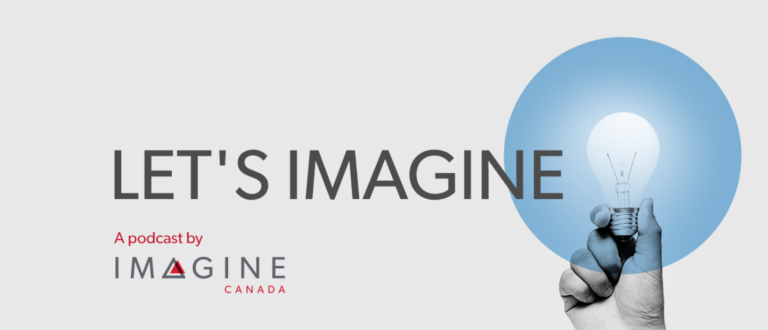Last spring, the federal government announced they would be holding a consultation on the disbursement quota (DQ) of registered Canadian charities. This signaled that for the first time in over 10 years, the Department of Finance is considering adjusting what charities are minimally required to disburse each year to qualified donees or spend on charitable programming.
In practice, the disbursement quota is most relevant to private and public charitable foundations. Currently, the quota is set to 3.5% and this is expected to increase. We will likely know the new percentage with the tabling of the 2022 federal budget this spring.
Our submission to the consultation was based on extensive review of the available tax data on what foundations currently spend, how much they hold in assets and how this might change with different disbursement quota levels, and how much more new money would be released and available to operating charities should the DQ increase at varying amounts.
Here, I ask Dave Lasby, our Research Director to highlight some of the data findings we’ve found useful for this policy file.
1. If you were to identify 3 or 4 highlights from your analysis, what would they be?
Looking at trends from 2008 to 2019, I think the most important thing—even more than the very significant growth in foundation assets over this period—is understanding how varied experiences have been, depending on the size and principal activity of foundations. While the huge overall growth captures a lot of attention, assets of smaller foundations have grown much more slowly than those of larger foundations. Similarly, the assets of endowments and operating foundations have increased less than those of grantmaking foundations and foundations with a significant donor-advised component. This is key to a lot of the variability in disbursement patterns.
The second thing to understand is, obviously, the scale of asset growth over the past decade. Since 2008, if we exclude MasterCard Foundation, total assets of public and private foundations have roughly doubled (if MasterCard Foundation is included, private foundation assets have almost quadrupled). Our analysis shows that larger foundations are growing quickly enough that significantly higher disbursements look to be sustainable. The key challenge is that this isn’t as true for smaller foundations and for some types of foundations (e.g., endowments, some grantmaking foundations).
The third thing is what’s driving this asset growth. Donations have played a huge role here, accounting for over half of total growth for both public and private foundations (if we exclude MasterCard Foundation from private foundations). In terms of other revenue sources, investments and earned income are significant for private foundations, while transfers from other foundations and government have played a larger role for public foundations. Looking at patterns by organization size, donations have played a larger role among smaller foundations, while investments and earned income have been a bigger factor for larger foundations. The key driver, overwhelmingly, is clearly donations; they account for the bulk of the growth and all the other drivers like investments ultimately track back to the initial donations.
The fourth thing is the value of additional disbursements that a higher disbursement quota might yield. Depending on the specific scenario and assumptions, we estimated that a higher DQ could result in between $260 million and $3 billion in additional disbursements annually, depending on the level selected (5% to 10%) and the assumptions we make to compensate for incomplete data.
2. What do you think others would be most surprised about? What was the most unexpected finding for you?
I don’t know if it would necessarily be as surprising to everyone, but as an analyst the thing that surprised me the most was how challenging it was to get a good picture of what was going on. It’s pretty common for T3010 analysis to be complex, particularly when dealing with multiple years worth of data, but this was probably the most challenging analysis I’ve worked on. Part of this is related to data quality and part is related to the disbursement quota rules.
In terms of data quality, reporting of the value of assets not used in charitable activities is surprisingly incomplete, with many missing values. While most of these values are blanks meant to represent zeros (i.e., all of the reporting foundation’s assets are used in charitable activities) instead of truly missing, there are lots of instances where a value is just not reported. Sometimes we can see this as breaks in the series, where the foundation reports a value for several years, doesn’t report for one or a few years, and then resumes. A key challenge was determining whether a blank entry was a zero value or truly missing (and then predicting what that missing value should be).
The rules, where foundations can cover disbursement shortfalls by rolling forward prior surpluses for up to five years and/or by over-contributing in the next year, mean that to assess disbursements for a single year, you actually need data for seven consecutive years (i.e., the five years prior, the reference year, and the following year). By extension, to get a complete picture of trends over five years you need 12 years of unbroken data! Data quality and completeness, then, have a huge impact. That said, reporting was complete enough that we were able to produce complete data for a large majority of the assets held by foundations (e.g., 72% for public foundations and 86% for private in 2018) and our reliance on predictions from incomplete data is comparatively limited.
3. When does the “sustainability” of the sector start to become an issue?
There’s a wide range of perspectives on this, but for me this is really about systemic sustainability, which has a number of key dimensions:
The most direct and obvious sustainability challenge would probably be if donations dropped significantly. Donations have been an absolutely central driver of growth in assets, and our assessments of sustainability depend on them continuing at current levels.
The second would be if we enacted policies that didn’t allow smaller foundations, foundations with more restricted revenue bases, not located in major urban centres, that fund different, more local, more focused causes, to survive and thrive. Given the challenge of establishing policies for a group as diverse as foundations and those they support, it seems to me that DQ reform isn’t going to be a “one and done” issue where we go from 3.5% to some single higher number, which is why we’ve suggested a scaled approach where the level of the quota depends on foundation size and designation. Critically, we also need a process involving regular review, that allows us to address unintended consequences and adapt to changing circumstances.
The third sustainability challenge is ensuring that disbursements keep pace with sector needs and public expectations, both in terms of how much money is disbursed and how it is distributed. With the pandemic and its uneven impacts, there’s a huge focus on this and not just from inside the charitable sector. If organized philanthropy ends up being viewed as exclusively the purview of an elite—which I can tell you from looking at T3010s from thousands of small foundations it isn’t—that’s going to be very problematic for us and will likely have negative effects not just on overall giving (i.e., giving to all charities, not just foundations), but also on the freedom of action organizations have.
4. Who is meeting the disbursement quota, and who isn’t?
Overall, the data seem to indicate that smaller foundations are having more challenges meeting the current quota than larger ones. Similarly, grantmaking foundations and endowments are having more difficulty than fundraising intermediaries, operating foundations, and foundations with a significant donor advised component. This appears to be driven primarily by the revenue sources foundations depend on (e.g., investment income vs. donations) and secondarily on what types of activities they focus on (e.g., grantmaking vs. direct charitable activity).
5. Which findings are really central to the question of whether to raise the disbursement quota? Can any findings shed light on whether foundations should exist in perpetuity?
From a data perspective, raising the DQ boils down to whether the amounts expended on charitable activities are increasing as fast as the assets not used in charitable activities. Given how incomplete the data are, it’s difficult to be very precise, but overall asset growth is outpacing spending on charitable activities. That’s certainly not the case for all foundations, but in the aggregate it looks to be so.
I don’t think the data give us a lot of insight into whether foundations should exist in perpetuity; that strikes me more as a philosophical question. What it does shed some light on is the extent to which foundations could exist in perpetuity. Bottom-line, perpetuity looks to be more challenging for some foundations (smaller, restricted revenue bases, etc.) than others. When I look at the patterns in the data, I think we need to be very concerned about the possibility of somehow accidentally enacting policy that makes perpetuity possible only for some sizes or types of foundations. The diversity of the foundation sector, and the charitable and nonprofit sector more broadly, is a key strength and it’s one I think we want to preserve.
6. What can you tell me about the growth of the field over the last ten years? What does the data say about how the private and public foundation sectors have changed?
For private foundations, I think the big story is the steady increase in the number of foundations. While the number of private foundations went from about 4,650 to 5,850, the number of public foundations is almost identical to 2008. Fully one quarter of private foundation assets in 2019 are held by organizations that didn’t exist in 2008. Looking at public foundations, I think the big story is the growth among foundations with donor-advised components. These have gone from accounting for about 22% of total public foundation assets in 2008 to 32% in 2019. This shift isn’t exclusively due to DAFs (in our classification system not all foundations with donor-advised components are DAFs), but they do look to be playing a pretty significant role here.
7. What are the limitations of this data for policy development, enforcement and regulation? What is needed for these barriers to be removed?
Beyond the issue of data quality and completeness we’ve already discussed, a key limitation is that we don’t have much insight into the nature of the assets foundations hold. We have some high level data such as the value of buildings and land vs. long-term investments, but we don’t have much detail beyond that. It’s difficult to accurately assess sector sustainability when we don’t know what the typical long-term investment portfolio looks like and what returns it is generating. Given the reporting burden, I don’t think this is something foundations should have to add to their T3010, but it does strike me that it would be wise to do some special studies to improve our understanding.
Phew! There is so much more to say regarding the T3010 dataset, and on this file generally. If you have questions, or views on the disbursement quota file, please contact us at publicpolicy@imaginecanada.ca.


